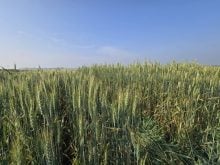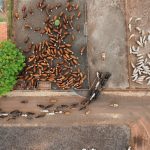Brothers Dave and Barry Pogson are building a unique workshop.
Instead of a traditional stud or pole-framed building the Pogsons have erected a 20 x 28-foot structure made with stacked, dovetail cornered, 8 X 10-inch timbers. The walls have an R-value of around 16 without any additional insulation.
Perhaps the most remarkable part of the story is where the logs originated. They used northwest poplar salvaged from a neighbour’s aging shelter belt and milled using the Pogsons’ homemade sawmill. Some of the trees, which were planted in 1969, were 80 feet tall.
Read Also

Manitoba Ag Days 2026: Local businesses gear up for Brandon farm show
Most of agriculture is seemingly at Manitoba Ag Days each January: Manitoba agribusinesses and farm groups look forward to connecting with farmers at the 2026 show.
“It’s very gratifying just to stand in here,” Dave told a dozen or so participants in a ‘low-impact logging course’ here Nov. 4 organized through Manitoba Agriculture, Food and Rural Initiatives (MAFRI). “You know the whole history of the tree, right from the day it was planted to its final use. If we look after it, this building will way outlive me, easy – and it’s poplar that would normally be second-or third-rate logs.”
It took the Pogsons five days or so to cut the trees and sort out the saw logs from the firewood, plus another five days to saw the logs into squared-up cants five to 18 feet in length. The structure was assembled July 26 and 27 during a timber-building workshop with the help of 25 participants.
There’s still lots to do, including installing a roof. The Pogsons will make the trusses themselves with more trees from that shelter belt. They’re even considering making their own wooden shingles.
The cracks between the logs will be filled with Styrofoam and caulked with a special product that adheres to the top and bottom timbers, even as it naturally expands and contracts with weather conditions.
The Pogsons plan to install a wood-fired boiler nearby to heat Dave and his families’ house and the workshop, fuelling it with waste wood from their mill.
Dave marvels at what can be done with low-grade wood that normally would have been bulldozed and burned. “As you can see we have a usable building.”
It also worked out for the shelter belt owners. The Pogsons got the logs for free; the owners got the trees removed for no cost. Meanwhile, Shawn Dias, a woodlot forester with MAFRI, based in Somerset is helping with the establishment of a new shelter belt.
“We actually had the people who planted these trees in the yard looking at the building,” Dave said. “They were quite impressed.” [email protected]















